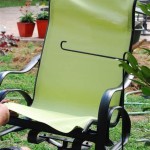Best Ways to Clean Your Patio Without a Jet Washer
Maintaining a clean patio significantly enhances the aesthetic appeal and usability of outdoor spaces. While jet washers offer a powerful cleaning solution, they aren't always necessary or desirable. Concerns about potential damage to delicate paving, excessive water usage, and noise pollution often lead homeowners to seek alternative cleaning methods. This article explores effective techniques for cleaning a patio without relying on a jet washer, ensuring a pristine outdoor area without the drawbacks.
Traditional cleaning methods often prove surprisingly effective, delivering excellent results with minimal impact on the environment and the patio surface. These methods frequently leverage readily available tools and household cleaning agents, offering a cost-effective and sustainable approach to patio maintenance. The key to success lies in understanding the specific type of dirt and stains present, and choosing the appropriate cleaning strategy accordingly.
Before embarking on any cleaning process, it's crucial to identify the type of material your patio is constructed from. Concrete, brick, natural stone, and composite decking each require different cleaning approaches to avoid damage or discoloration. Understanding the material's porosity and susceptibility to staining will guide the selection of cleaning agents and techniques.
Sweeping and Debris Removal
The first and arguably most fundamental step in cleaning a patio is the thorough removal of loose debris. Leaves, twigs, dirt, and other organic matter can accumulate quickly, providing a breeding ground for mold and mildew, and contributing to overall dirtiness. Use a stiff-bristled broom to sweep the entire patio surface, paying particular attention to corners and edges where debris tends to collect.
For patios with wider gaps between paving stones, a long-handled weeding tool or a specialized patio brush can be used to remove weeds and accumulated debris from the joints. Leaving debris in the joints can lead to staining and accelerate the deterioration of the patio surface over time. Regular sweeping, ideally on a weekly basis, will significantly reduce the build-up of dirt and minimize the need for more intensive cleaning efforts later.
After sweeping, consider using a leaf blower to efficiently clear any remaining loose particles. This is particularly helpful for larger patios with numerous crevices and hard-to-reach areas. The force of the air will dislodge any lingering debris, preparing the patio surface for the next stage of cleaning.
Scrubbing with Soap and Water
For general cleaning and the removal of light dirt and grime, a simple solution of soap and water often suffices. Choose a mild, pH-neutral detergent to avoid damaging the patio surface or harming surrounding plants. Harsh chemicals can discolor certain types of stone and negatively impact the environment.
Mix the detergent with warm water in a bucket, following the manufacturer's instructions for dilution. Apply the solution to the patio surface using a stiff-bristled brush or a scrubbing brush with a long handle. Work in sections, scrubbing thoroughly to loosen dirt and grime. Pay close attention to areas with visible stains or discoloration.
After scrubbing, rinse the patio thoroughly with clean water. A garden hose with a spray nozzle is ideal for this purpose. Ensure that all traces of soap are removed to prevent residue build-up, which can attract dirt and create unsightly streaks. Allow the patio to air dry completely.
For more stubborn stains, consider using a specialized patio cleaner designed for the specific type of material your patio is made from. Follow the manufacturer's instructions carefully, and always test the cleaner in an inconspicuous area first to ensure it doesn't cause discoloration or damage.
Utilizing Natural Cleaning Agents
For those seeking eco-friendly cleaning solutions, several natural alternatives to commercial detergents offer effective cleaning power. White vinegar and baking soda are two readily available household staples that can be used to clean patios safely and effectively.
White vinegar is a mild acid that can help to dissolve dirt, grime, and mildew. Mix equal parts white vinegar and water in a spray bottle and apply the solution to the patio surface. Allow it to sit for 15-20 minutes before scrubbing with a stiff-bristled brush. Rinse thoroughly with clean water.
Baking soda is a mild abrasive that can help to scrub away stubborn stains. Create a paste by mixing baking soda with water and apply it to the affected areas. Let it sit for a few minutes before scrubbing and rinsing. For particularly tough stains, sprinkle dry baking soda directly onto the stain and scrub with a wet brush.
Another natural option is a solution of diluted bleach. While bleach is a potent disinfectant, it should be used with caution and diluted appropriately. Mix one part bleach with ten parts water and apply the solution to the patio surface. Allow it to sit for a few minutes before scrubbing and rinsing thoroughly. Always wear gloves and eye protection when working with bleach, and avoid contact with skin and clothing. Ensure adequate ventilation and avoid using bleach near plants or grass, as it can be harmful.
When using any cleaning agent, natural or commercial, it is crucial to rinse the patio thoroughly to remove all traces of the cleaning solution. Residual cleaning agents can attract dirt, create slippery surfaces, and potentially damage the patio material over time.
Regular maintenance is key to preventing the build-up of stubborn stains and minimizing the need for intensive cleaning. Sweep the patio regularly, remove spills promptly, and address any signs of mold or mildew growth as soon as they appear. By adopting a proactive approach, you can keep your patio looking its best with minimal effort.
In addition to the methods described above, several other techniques can be employed for specific patio cleaning needs. For example, a deck brush with an extendable handle can be useful for cleaning large patio areas without requiring excessive bending or kneeling. Specialized patio scrubbers with rotating brush heads can also provide efficient and thorough cleaning.
For patios with significant mold or mildew growth, a solution of oxygen bleach (sodium percarbonate) can be particularly effective. Oxygen bleach is a non-toxic alternative to chlorine bleach and is considered safer for the environment. Mix the oxygen bleach powder with hot water according to the manufacturer's instructions and apply the solution to the affected areas. Allow it to sit for several hours or overnight before scrubbing and rinsing. Oxygen bleach is particularly effective at removing organic stains and brightening the patio surface.
Ultimately, the best way to clean a patio without a jet washer depends on several factors, including the type of patio material, the severity of the dirt and stains, and personal preferences. By experimenting with different cleaning methods and techniques, homeowners can find a solution that effectively cleans their patio while minimizing environmental impact and preserving the integrity of the patio surface. Regular maintenance and proactive cleaning will ensure a beautiful and inviting outdoor space for years to come.

How To Clean A Patio Without Pressure Washer Express Co

How To Clean A Patio Without Pressure Washer In 2024 Asmr Cleaning

Patio Cleaning Without A Pressure Washer Satisfying Powerwashing

How To Clean Patio Pavers Without Pressure Washer Bond Cleaning In Hobart

How To Clean Your Patio Without A Pressure Washer With Two Kitchen Ingredients Express Co

Five Simple Ways To Clean Patio Slabs Without A Pressure Washer

How To Clean Your Patio Without A Pressure Washer According Paving Expert Express Co

How To Clean A Patio Without Pressure Washer Express Co

How To Clean Patio Slabs

How To Clean Paving Patios A Comprehensive Guide Awbs
See Also








